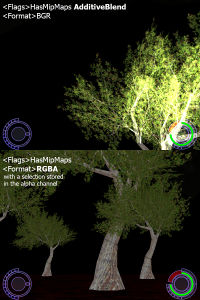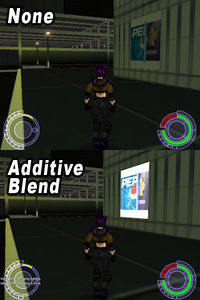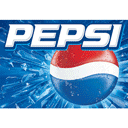XML:TXMP
| TXMP : Texture Map | 
| |
|---|---|---|
| XML
TXMB << Other file types >> TxtC |
General notes
- The XML on this page was tested with OniSplit v0.9.61.0.
- Textures' X and Y dimensions are typically powers of two (e.g. 128, 256, 512). Oni and OniSplit will accept textures with dimensions that are not power-of-two, however there can be issues with them (see User talk:Neo/Archive5, search "power"), so it's best to avoid them.
- A texture's height and width don't need to be equal, e.g. you can use 128x256.
- The camera can look at 2049 transparent textures at once; one more, and Oni crashes.
Tag hierarchy
| Standard texture | Animated texture | Reflective texture |
|---|---|---|
<?xml version="1.0" encoding="utf-8"?>
<Oni>
<Texture>
<Flags>...</Flags>
<Format>...</Format>
<Image>...</Image>
</Texture>
</Oni>
|
<?xml version="1.0" encoding="utf-8"?>
<Oni>
<Texture>
<Flags>...</Flags>
<Format>...</Format>
<Speed>...</Speed>
<Image>...</Image>
<Image>...</Image>
</Texture>
</Oni>
|
<?xml version="1.0" encoding="utf-8"?>
<Oni>
<Texture>
<Flags>...</Flags>
<Format>...</Format>
<EnvMap>...</EnvMap>
<Image>...</Image>
</Texture>
</Oni>
|
XML tags
| XML tag | Content type | Description | ||||||||||||||||||||||||||||||||
|---|---|---|---|---|---|---|---|---|---|---|---|---|---|---|---|---|---|---|---|---|---|---|---|---|---|---|---|---|---|---|---|---|---|---|
| <Texture> | - | |||||||||||||||||||||||||||||||||
| <Flags> | flag |
| ||||||||||||||||||||||||||||||||
| <Format> | flag | ARGB formats are used for reflective textures (Alpha Red Green Blue)
ARGB8888 can be used only if you use an updated engine (which comes with the AE). (When Macs were still on the PowerPC processor, Oni's textures needed to have their color channels swapped or else they would appear color-inverted, but after the move to Intel Macs, both platforms used the same Windows-format textures.)
| ||||||||||||||||||||||||||||||||
| <Speed> | integer | This tag is used if the XML file is meant to create an animated texture. In that case you would use multiple <Image> tags.
Let's say Speed is set to 7 — then the animation will advance every 7th frame. | ||||||||||||||||||||||||||||||||
| <EnvMap> | link |
This tag is used if the XML file is meant to create a reflective texture. File suffixes like .tga or .oni are not used in the EnvMap link. | ||||||||||||||||||||||||||||||||
| <Image> | link |
Creating a texture from a JPEG, PNG or DDS is only supported via the command line's "-create:txmp" argument. | ||||||||||||||||||||||||||||||||
Animated textures
It's tiresome to manually create an XML file with a large number of <Image> tags. Skip that work by using Simple OniSplit GUI. (Normal TXMP creation is also supported.)
Some advice:
- When using XML to import, OniSplit can only accept TGA images.
- AdditiveBlend should only be used on things that are supposed to glow — otherwise you might think that the object ignores its vertex shading. In the case of the billboard at the right, this was an improvement; now it's a transparent OLED billboard.
- Long animations in high quality (512x512, RGB) produce VERY big .oni files. The source billboard GIF is 1.7MB and the resulting .oni file is 273MB. That's because TXAN doesn't support variable timing like the GIF format, so a smooth animation like this one will have a ton of duplicate frames in it. Even as a ZIP, the .oni file was still 66MB, which is unreasonably large. The billboard could possibly be broken into 3 static and 3 transitional images, and then animated "manually" via a BSL loop. The conclusion is to use animated images with lower quality settings and to avoid long periods of duplicate frames which waste space.
HERE is some information on how to create an animated texture within various graphics programs.


